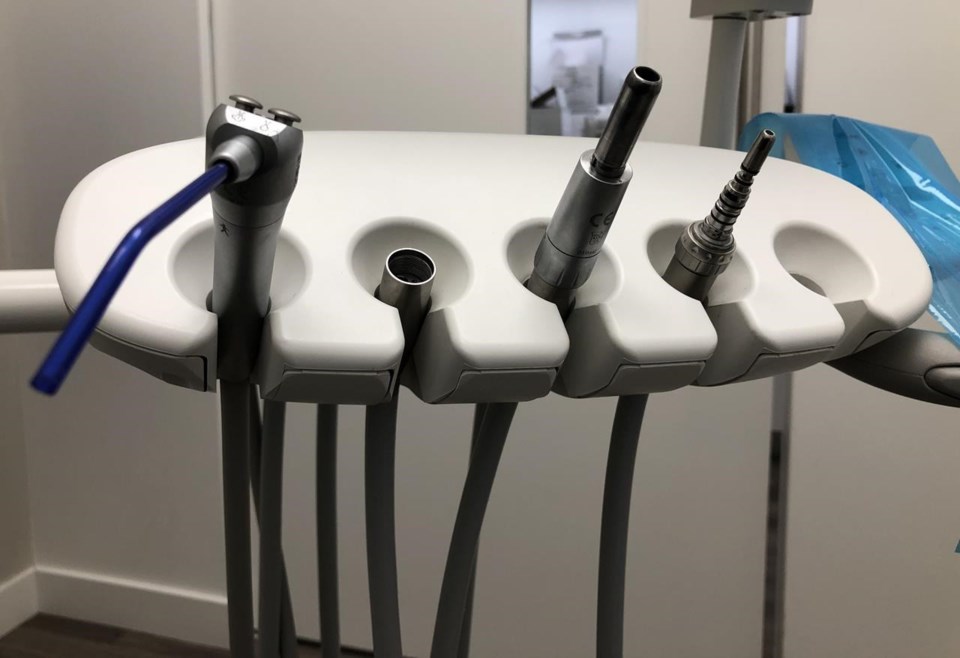OTTAWA — Some dentists and hygienists fear they won't be fairly paid for services under a new federal dental plan, and they worry it will jeopardize the success of the massive program.
Each provincial and territorial dental association has its own guide to how much dental services cost, based on labour, overhead and material costs in their regions.
The federal reimbursement plan closely resembles what the government pays as part of its benefits scheme for First Nations and Inuit, called the Non-insured Health Benefits program, or NIHB.
That program typically pays out less than is recommended by provincial and territorial guides. The services that are covered also closely mirror the NIHB plan.
That means dentists may not want to sign up to take part, or patients may have to pay the difference out of pocket, said Nova Scotia Dental Association president Dr. Juli Waterbury.
"This Canadian dental care plan will not succeed if dentists across Canada decide to opt out of this plan," Waterbury said in an interview Thursday.
Reimbursement amounts for the new federal program are meant to be fair to providers and responsible with public funds, said federal officials who provided a briefing on the condition they not be named.
So far the federal government has only released its reimbursement plan for 2023, but says updated information for 2024 will be available in time for dentists to start claiming reimbursement in May.
In Nova Scotia, the suggested fee for a single silver filling in 2023 was $164, but the federal dental plan proposes to pay only $108.58, Waterbury said.
Private dental insurance plans don't always cover the full costs recommended in the provincial fee guides either, but Ontario Dental Association president Dr. Brock Nicolucci said they come closer.
"Every procedure is different, but it's a lot lower than what normal private dental care benefits provide for," he said.
Getting buy-in from dentists, hygienists and other dental-care providers is an important factor, Nicolucci argued.
"If we have a dentist that doesn't want to partake in the program, then what happens to the patient?"
It may not be a problem in a city with lots of dentists, Nicolucci said, but if a dentist in a rural community doesn't sign up that means a patient would be forced to travel.
The discrepancy is even greater for hygienists who don't work in a dentist's office, The Canadian Dental Hygienists Association said.
The costs are likely to be passed on to patients in what's called balanced billing, but that's not something the association wants to encourage, said Sylvie Martel, the director of dental hygiene practice at the association.
"The reason why the plan was put together was to alleviate the cost burden of providing oral health care," so that the cost wouldn't deter people from treating their teeth, said Martel.
Federal officials say the fees are expected to evolve and be updated as the program goes on.
A federal insurance-like program for dental care was developed as a condition of a deal between the Liberals and the NDP, in exchange for the opposition party's support on key votes.
It's expected to provide coverage to uninsured families with a household income under $90,000, starting in May, with seniors the first to be invited to take part.
The plan is slated to cost $13 billion over five years.
NDP health critic Don Davies says dentists and other oral health-care providers should be compensated at the same rates they receive when they treat people with regular employer-provided insurance plans.
Davies said last week he doesn't expect dental professionals to subsidize the federal plan.
More than 600,000 seniors have already enrolled, and the program is expected to provide coverage to as many as nine million Canadians by the time it is fully expanded next year.
Providers will be able to enrol to provide services under the plan next month.
Between the reimbursements, the expected administrative burden and the existing staff shortages in dental offices, Waterbury said it's unlikely she'll enrol as a provider.
"It might mean that some of my existing patients won't be able to access care through me anymore, and I find that very hard to deal with," she said.
This report by The Canadian Press was first published Jan. 8, 2023.
Laura Osman, The Canadian Press

